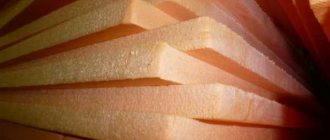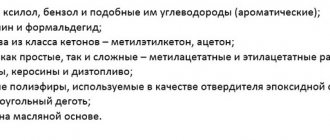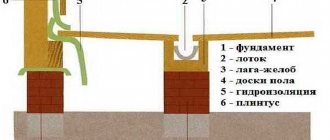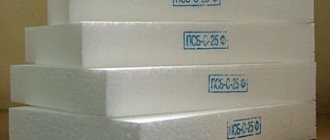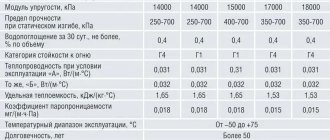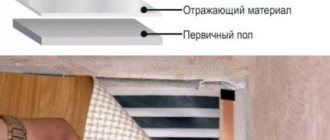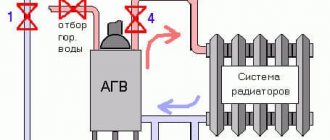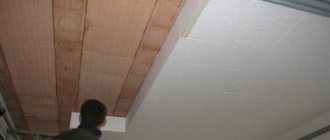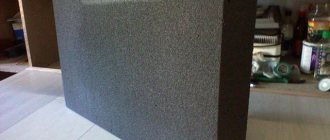How to produce
Expanded polystyrene is a type of foam plastic. It is produced from polystyrene using the technology of foaming molten polymer with gas. The mass, consisting of microgranules, is steamed at high pressure and temperature and increases in volume by 10-30 times. As a result, a rigid foam with microcells evenly dispersed throughout the volume is obtained from the polymer melt.
The foamed mass receives its final form thanks to extrusion technology (pressing the melt through a molding hole). In this way, extruded polystyrene foam is obtained, the density and other technical characteristics of which depend on the parameters of the porous structure.
It is shaped into slabs and labeled with the letters XPS. The cells in its structure are closed and separated from each other, their size ranges from 80 to 180 microns. Externally, the slabs have a smooth orange surface. Natural gas is dissolved in classic polystyrene foam. To obtain a fire-resistant material, carbon dioxide is used and fire retardants are added.
Production of penoplex Source glotr.uz
Where is Penoplex Comfort used?
It is important to realize that the material is not capable of making the house warmer on its own. Its task is to retain heat inside the home. The closed-porous structure of the boards explains the thermal conductivity of polystyrene foam and turns it into effective thermal insulation. Penoplex Comfort (trade mark of expanded polystyrene) is used in the following works:
- In private housing construction. With its help, frame structures are insulated, starting from walls and partitions, and ending with insulated attics and interfloor ceilings.
- They carry out insulation of strip and slab foundations, and organize thermal protection of the basement floor.
- They insulate the pitched roofs of private houses and cottages, the living space of the attic or attic.
- The blind area around the house is thermally insulated.
- The slabs are laid at the base of platforms and walkways to avoid deformation due to frost heaving of the soil.
- Insulate the floor in rooms above a cold basement.
Pool insulation Source pikabu.ru
- When installing a heated floor, under a screed, for thermal insulation of the floor along the joists.
- During the renovation of a city apartment, for insulating walls, floors, loggias or balconies.
- For thermal insulation of outbuildings and garages.
- In places with high humidity: in a bathhouse, sauna, gym, swimming pool, wine cellar or basement.
See also: Catalog of companies that specialize in home insulation
Advantages and disadvantages
Penoplex Comfort is a material for thermal insulation of buildings, which is suitable for the construction of premises for almost any purpose and is effective for providing thermal insulation of any surface.
Penoplex Comfort - technical characteristics
This is a fairly new material, which is made using the extrusion method from polystyrene and helps to solve a number of problems at once:
- allows you to achieve a high level of thermal insulation;
- protects all building structures from exposure to cold;
- helps reduce heating costs;
- provides a healthy and suitable indoor microclimate for humans.
The material has many advantages over conventional insulation materials, which is why it has earned popularity. First of all, it is worth noting its homogeneous porous structure, as well as its low weight, which makes it easy to work with the material and not burden the structure. Thanks to its homogeneity, the material does not crumble.
Main types of Penoplex
The remaining advantages of Penoplex are as follows:
- due to its low thermal conductivity coefficient, it retains heat well;
- the material does not absorb water, which means it is also suitable for insulating saunas or baths, and not just residential buildings;
- Parasites do not live on Penoplex, fungus does not develop;
- excellent tensile and compressive strength;
- the material does not burn, as it is treated with special compounds;
Table of technical characteristics of Penoplex
- Penoplex also allows you to increase the level of sound insulation, as it perfectly absorbs noise;
- The material is convenient to work with - it can be cut with a simple knife, no special tool is required;
- you can work with Penoplex at any temperature;
- long service life (up to 50 years) makes it possible not to worry about quick repairs and replacement of insulation. Penoplex retains all its properties for a long time. And a number of specific experiments report that it can last even 80 years.
The material has many advantages
On a note! Any insulation must perform its primary functions well, and also be safe for humans, environmentally friendly, strong, and durable. Penoplex meets all these requirements.
But since ideal materials do not exist, it is important to talk about the disadvantages of this type of insulation. So, if you leave it in the sun without covering it, that is, in direct rays, the material will begin to deteriorate. Also, despite the fact that it does not burn, the smoke it produces in the event of a fire can be significant. Moreover, even extinguished Penoplex will smoke for a long time. And if a solvent is spilled on it, the material will collapse. By the way, this is why not all adhesives can be used when installing Penoplex. And, most importantly, and for many of decisive importance, is the price. The cost of the material is quite high.
Wall insulation with Penoplex
Prices for Penoplex
Penoplex
Thermal conductivity and its relationship with thickness and density
Thermal conductivity is the property of a material to transfer energy (heat) from more heated areas to less heated ones. The worse it is, the better the material copes with retaining heat.
The thermal conductivity coefficient helps to evaluate the characteristics. It is determined experimentally and measured in W/mK. Dimension shows how much heat passes through a unit of substance; the lower the coefficient, the better the material keeps heat from spreading. The thermal conductivity of foam is determined by its density and thickness.
Insulation of the loggia Source prom.st
The relationship between thermal conductivity and foam thickness is directly proportional. This means that the thicker the material, the more reliably it will retain heat. Based on thickness, polystyrene foam boards are divided into three groups:
- From 10 to 30 mm . Thin slabs are used to insulate internal walls and partitions. The thermal conductivity coefficient is limited to 0.035 W/mK.
- Up to 100 mm . Medium thickness slabs are suitable for insulating external and internal surfaces in regions with long and frosty winters. Thermal conductivity is reduced to 0.031-0.032 W/mK.
- More than 100 mm . Thermal conductivity drops to 0.031 W/mK. The slab material is suitable for use in the Far North (including when pouring the foundation).
The relationship between thermal conductivity and foam density is inversely proportional. As density increases, the number and size of air cells decreases. At the same time, the thermal conductivity coefficient of polystyrene foam increases. This means that the denser the slab, the more thermal energy it will transmit into the space.
Thermal insulation is the same, thickness is different Source uteplix.com
Old classification of Penoplex insulation
Initially, the plant produced three types of extruded polystyrene foam depending on density: Penoplex 35 (with a density of 35 kg/m3), Penoplex 45 (45 kg/m2) and Penoplex Standard (32 kg/m3). In addition to density indicators, insulation materials have different sizes, thickness, compressive strength, flammability group and KMO class. The scope of use of each insulation also varies.
- Penoplex 35 density is one of the most popular brands of insulation, which was used to insulate various types of enclosing structures: foundations and plinths, operated and unused roofs, floors and walls.
- Penoplex 45 coped with increased loads when insulating foundations, ground floors, as well as highways and railways, runways, bridges, tunnels in the Far North and on heaving soils.
- Penoplex STANDARD was most often used to insulate swimming pool bowls, floors and shallow foundations, fire tanks, settling tanks and wells.
Previously, Penoplex extrusion was produced in standard thicknesses from 20 to 100 mm, width 600 mm and length 1200 mm. We sorted out the old parameters. It's time to find out the modern classification of Penoplex.
Density table for Penoplex 35, 45 and Standard insulation
| Density | Length, mm | Width, mm | Thickness, mm |
| 35 | 1200 | 600 | 20, 30, 40, 50, 60, 80, 100 |
| STANDARD | 1200 | 600 | 20, 30, 40, 50, 60, 80, 100 |
| 45 | 2400 | 600 | 40, 50, 60, 80, 100 |
Other technical characteristics
It's hard to believe, but polystyrene foam is 98% air, enclosed in thin cell shells. The remaining 2% comes from the mass of synthetics. It turns out that it is air that determines the outstanding heat-saving properties of plastic. Other qualities of Penoplex Comfort are also valuable; the characteristics of which are controlled by the standards of TU 5767-006-54349294-2014 and the work of accredited laboratories.
For heated floors Source oboiman.ru
Other characteristics include:
- Low water absorption . The material is produced as a closed-porous homogeneous structure; there is no capillarity, and the cells are completely sealed. As a result, water absorption per day does not exceed 0.4% by volume, over 28 days - no more than 0.5%.
- Durability . The manufacturer claims a service life of 50 years, without loss of shape and heat-insulating qualities, provided that it is installed correctly. When tested, the material withstood more than 50 heating/freezing cycles in the range from -40 to +40°C.
- Versatility . Slab material is used in all regions, from the south to the Arctic.
- High compressive and bending strength . If Penoplex Comfort was used for the construction of temporary structures, it can be reused.
- Biostability . Penoplex does not serve as a breeding ground for the development of mold.
- Environmental friendliness . The material does not emit substances hazardous to human health and the environment.
Insulation under siding Source 2gis.com
Advantages and disadvantages of penoplex
This insulation has many positive aspects. These include strength, an environmentally friendly material, it does not shrink or decrease in size over time (this allows the material to be used to insulate the foundations of buildings). In addition, a high level of density ensures resistance to penetration of moisture, various types of steam or mold.
Special additives can further improve technical characteristics. For example, after special treatment, the slabs will not ignite even when exposed to the highest temperature. It is also worth noting the fact that this type of material is quite easy to work with. It is easy to cut and can be laid on any surface. Penoplex insulation will last at least thirty years, which is quite a long time.
If we talk about the disadvantages of this material, then there are practically none, and if you use the heat insulator correctly, they can be completely avoided. Observe the temperature regime and then the plates will not deform or melt. It should be noted that the insulation is too afraid of various types of organic solvents. Such substances can spoil the material, its shape, and integrity in a matter of minutes, which will have an extremely negative impact on the insulation.
Foamed polystyrene foam is a recognized standard in the construction industry. It is widely used due to the fact that it has many more advantages compared to alternative materials.
Key advantages of Penoplex:
- Excellent thermal insulation performance. It provides reliable protection against heat loss. Experts say that Penoplex is almost the best of its kind.
- Strength. Damaging a slab of extruded polystyrene foam is not so easy. Thanks to this, it will not be damaged during storage and transportation, and can also be used in the construction of railways and highways.
- Low hygroscopicity. The material is extremely resistant to multiple cycles of freezing and defrosting, therefore suitable for use in regions with difficult climatic conditions. However, before installation it is better to protect it from direct ultraviolet radiation and various atmospheric influences. According to experts, even when the building is dismantled, the Penoplex slabs remain practically intact and unharmed.
- Durability. From the above, it can be argued that the material is resistant to various influences, which ensures a long service life.
- Good sound insulation properties.
- Anti-corrosion properties.
- Light weight. This advantage allows foamed polystyrene to be transported and installed without much difficulty.
- Versatility. Expanded polystyrene is widely used, which is ensured by a large selection of Penoplex series with various technical characteristics.
Despite many advantages, extruded polystyrene foam also has several disadvantages:
- Firstly, it has a flammability class, so one cannot claim 100% fire safety.
- Secondly, Penoplex can be destroyed under the influence of solvents.
- Thirdly, some buyers consider insulation to be quite expensive. However, those who need truly high-quality material justify the price of polystyrene foam.
The advantages of Osnova penoplex insulation include the following characteristics:
- Good thermal insulation properties. The material allows you to insulate buildings even in regions with harsh climates.
- Low degree of vapor permeability.
- The material does not absorb moisture. That is why penoplex is often used to insulate baths and saunas.
- High strength. The described insulation can withstand heavy loads and therefore can be used for a long time without the appearance of defects. The service life of this material is about 50 years. Throughout the entire period of use, the material retains its shape and properties.
- Environmentally friendly. The material does not decompose into components that are harmful to the human body.
- Mold does not appear on the material even when used in conditions of high humidity.
- Easy installation of insulation. When insulating a building, the material can be cut with a painting knife.
- Possibility to carry out insulation work at any time of the year.
- Light weight. Thanks to this, the insulation does not create additional load on the foundation. This is especially important when the insulation of a building does not occur at the construction stage.
The described material has practically no disadvantages. When penoplex ignites, a large amount of smoke is generated, but this cannot be considered a serious disadvantage, since in the event of a fire, the structure will suffer quite severely, regardless of the insulation used.
Properties affecting installation
Private developers do not need to pay attention to the critical characteristics of Penoplex Comfort. For example, compressive strength at 10% deformation is important to consider only for multi-story projects. The parameter is 0.18 MPa. This means that a load of 18 tons per square meter must be applied in order for the slab to shrink by 10%. Such strength more than covers the loads arising in the foundation of a two-story private house.
The values of water absorption and thermal conductivity are almost the same for different brands, so the more important property is not the density of the foam, but its thickness and degree of flammability. Environmental friendliness makes installation safe, eliminating the need for personal protective equipment.
The speed of work is ensured by the light weight (the package weighs 7.5-8.5 kg) and the pliability of the material (the slabs are cut with a knife). The slabs are equipped with an L-shaped edge, which allows you to obtain a continuous layer of thermal insulation without cold bridges. After installation, it is recommended to protect the insulation from solar ultraviolet radiation to avoid its destruction.
Thermal insulation of the floor in the bathhouse Source tetrapilon.ru
Distinctive features
Penoplex comfort acquired technical characteristics thanks to its cellular structure. They are evenly distributed over the entire area of the product. The size of each cell varies in the range of 0.1 -0.2 mm. As a result, the material acquires proper thermal insulation properties and does not accumulate moisture.
The manufacturing principle consists of foaming polystyrene foam with additional enrichment with inert gas. Next, the building material blank is passed through a special press nozzle. Each slab has a specific geometry in the shape of an “L”. It is advisable to buy penoplex comfort due to its safe composition. Accordingly, you will not need to use specialized equipment to carry out the installation.
Penoplex comfort technical characteristics
- average service life is 50 years; • thermal conductivity 0.03 W/m*K;
- penoplex comfort density 25-35ka/m³;
- withstands temperatures ranging from -50 to +75 degrees; • absorbs sound up to 41 dB.
Penoplex comfort price is fully justified by high technical characteristics and proper workmanship.
Material advantages
It is advisable to purchase Penoplex comfort as a thermal insulation material:
- withstands the effects of chemicals; • does not collapse when frost sets in;
- a wide range of blocks of various sizes; • does not require professional knowledge for installation;
- light weight; • expanded polystyrene penoplex comfort is not affected by the development of mold and mildew; • it is enough to use a painting knife to cut the structure.
Penoplex comfort insulation is an excellent competitor to other types of thermal insulation materials from global manufacturers.
Scope of application
Penoplex comfort has found application not only in private homes, but also for apartment buildings. In comparison with analogue materials from other companies, there are a number of differences. As a rule, they have a narrow specialization and are used for walls and roofs.
Penoplex comfort is a universal thermal insulation material that can be used for foundations, ceilings, walls, balconies and loggias, as well as floors. In addition, the structure is often used for the proper installation of baths, saunas, and swimming pools.
The low flammability of penoplex comfort allows the material to be used under any type of surface: concrete, wood, brick, foam block and soil.
Size chart
Penoplex comfort has standard dimensions, which provides simple installation instructions:
- 50*600*1200 mm (7 pieces included in the set);
- 1185*585*50 mm (penoplex comfort packaging holds 7 pieces); • 1185*585*100 mm (4 slabs);
- 1200*60*50 mm (7 plates); • 1185*585*30 mm (12 slabs).
Penoplex comfort price per sheet is determined depending on the dimensions of the slabs.
How to insulate walls outside. Several effective recommendations.
Penoplex comfort base can be used to insulate walls and floor coverings. To ensure proper protection for your walls, you should pay attention to the following installation tips:
- preparatory stage. First, you need to clean the walls from dust and dirt and get rid of the old coating. It is recommended to pre-treat with an antifungal compound and apply plaster to obtain a smooth surface; • to glue the boards, you will need to use an adhesive composition. The wall surface must be dry. The adhesive solution is applied to the slab;
- for mechanical fastening you need to purchase dowels (on average 4 pcs). Near window and door openings, 2 times more dowels are used (up to 8 pcs); • penoplex comfort under the screed is used before applying plaster. To increase adhesion, it is best to make the surface slightly rough;
- As an alternative to plaster, you can use wood or siding.
If penoplex comfort xps cannot be used for thermal insulation from the outside, then installation can be done from the inside. The installation process occurs in a similar way. However, a vapor barrier layer is used on top of the material. To do this, it is enough to use inexpensive polyethylene foiled film.
Attention: this method is used to install heat-insulating material for a balcony or loggia. The joints between the plates are glued with tape. The result is a design that works on the principle of a thermos.
Insulated floor
Penoplex comfort for heated floors is used no less often than for walls. However, the principle of laying under a screed for different purposes may have distinctive features. If the living space is located above the basement, then such a floor will be cold and an extruded material will be required, laid in several layers, to eliminate this drawback.
As in the previous case, first you need to clean the floor from dirt. If cracks appear, they must be repaired before installation. Next, use a primer mixture.
If there is a basement below, it is recommended to waterproof it first. Mounting tape must be glued around the entire perimeter. Sometimes there is labor or wiring on the surface. In this case, the first thermal insulation layer is laid first. A reinforced polyethylene film is placed on top, helping to provide high-quality protection from moisture. A reinforcing mesh is installed on top of the waterproofing.
Next you need to prepare a sand-cement mixture. It is distributed over the entire area with a thickness of 10-15 mm. If you plan to make a heated floor, then you can begin the procedure. Heating elements are placed on the base and secured with clamps. Next, fill the structure with mortar and level the surface. All you have to do is wait a day until the floors are completely dry.
Briefly about the main thing
Penoplex Comfort is an insulator designed for use in private housing construction. It is obtained from a foamed polymer melt followed by formation using extrusion technology. Penoplex slabs are used for thermal insulation of walls, foundations and roofs of residential buildings; They are used to insulate walls, floors and balconies in city apartments.
The material helps make the home warm without loading the structure; thermal insulation is reliable and effective. Thermal conductivity coefficient is responsible for heat conservation, the value of which depends on the density and thickness of the slab.
Ratings 0
Classification of Penoplex in a modern version
Old brands are a thing of the past, and information on the Internet about the availability of these goods in warehouses is clearly irrelevant.
This is easy to determine if you contact the managers of such online stores. Attention! The manufacturer has every right to rebrand and change sizes and technical characteristics in order to improve the quality of its products.
We are official dealers of the Penoplex plant in the Moscow region, therefore we offer the latest information about the products supplied. From previous types of thermal insulation, Penoplex 45 insulation is still produced, which does not lose popularity among developers. You can purchase thermal insulation material of this brand of the required size and thickness from our company at an excellent price right now.
- Penoplex Roofing. Insulation with a density of 28-33 kg/m3 is an improved analogue of the good old Penoplex 35, the thickness of which varies from 20 to 150 mm, length 1185 and 2370 and thickness 585 mm. The slabs are indispensable for insulating all types of roofing systems.
- Penoplex pitched roof. The material was specially developed by engineers for effective thermal insulation of pitched roofs in private suburban construction. Available in thicknesses of 100, 120 and 150 mm.
Corresponds to the old type Penoplex 35 without fire retardant additives and is produced in thicknesses of 50 and 80 mm, length 1185 and width 585 mm. Recommended for insulating loaded structures and can be used for at least 50 years without deformation or loss of thermal insulation properties.
Penoplex Foundation.- Penoplex Comfort. A real gift for private owners, corresponding to the outdated Penoplex 31C type with a density of 25-32 kg/m3. The range of thicknesses is presented in sizes from 20 to 150 mm. The slabs are indispensable for thermal insulation of loggias and balconies, walls of apartments and country houses.
- Penoplex Geo. High-density slabs are designed for insulation of various recessed structures. The thickness of the slabs varies from 20 to 150 millimeters, and the increased length of up to 2370 mm makes it possible to reduce the number of joints and minimize cold bridges.
- Penoplex Base. Such insulation allows you to thoroughly protect the base, walls and pitched roof from freezing for decades to come. The dimensions of the material fully correspond to Penoplex Geo insulation, and the density of Penoplex Basis ranges from 28 to 35 kg/m3.
- Penoplex Facade. The material is an updated version of Penoplex 31 with fire retardants and, as its name implies, is intended for insulation of facade systems of private and multi-storey houses, industrial buildings, as well as heat and sound insulation of walls and partitions. The standard sizes of the slabs correspond to the two previous brands.
Note: the longest slabs from the entire Penoplex line include the industrial insulation PENOPLEX®BLOK, up to 3000 mm long, designed for thermal insulation of roads.
The range of modifications of Penoplex insulation has expanded significantly. Now you can quickly select the appropriate material, since the name of the series is consonant with the structures where it is applicable. Penoplex Roofing, Facade, Geo and others. We invite you to watch the video to understand how the foundation of a house is insulated with Penoplex Foundation slabs.
